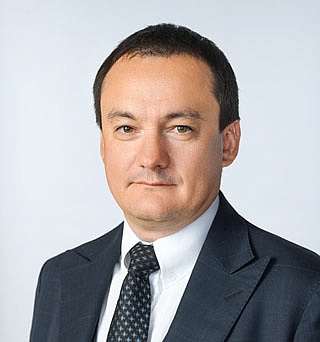Fame, fortune and counterfeits
18 May 2019Counterfeiting is the bad side of being a famous brand. Nobody will produce fakes of a brand which is unknown and counterfeiters make money on selling fake goods bearing the names of popular brands. Very often people may buy such products with clear understanding they are not genuine, but some people may be intentionally misled by the bad guys. In both cases, the brand suffers damage and the brand owner has to defend it. The strategy for defence depends on a country and options available under the local laws of a given jurisdiction.
As far as Russia is concerned, it is a matter of fact that most of counterfeit goods are imported to Russia from other countries. Therefore, it is necessary to monitor the movement of the goods through the border to detect and prevent illegal importations. In this light, it should be noted that the Russian Customs is very active and cooperative with the brand owners whose trademarks are recorded at the special customs IP register. In case the trademark is not recorded in the customs IP register, the customs can do random inspections.
It should also be taken into account that Russia is a member of the Eurasian Economic Union established by five countries: Russia, Belarus, Kazakhstan, Kyrgyzstan and Armenia. Since there are no customs borders between the countries within the union it is advisable to record the trademark in the local customs IP registers of each country-member to prevent illegal importation of the trademarked goods from other countries and its free flow within the union.
Once the goods cross the border they become available to consumers on the local market. Sometimes there are single shipments (private parcels) but in most cases the goods are stored in a huge warehouse from which they are spread throughout the country. It seems that the best approach here will be locating the warehouse or a big sale point and arrange the police raid. In order to go this route an investigation agency should be involved.
Therefore, the efficient strategy for brand protection in Russia should include three main options:
- Recordal of a trademark in the Customs IP Register (Russia and Eurasian Economic Union countries)
- Taking offline legal actions (investigations, police raids, litigation)
- Online brand protection actions (monitoring and enforcement)
If the brand owner focuses on one option only (for example, offline legal actions), it will not bring positive results and will not be effective. In such a situation the volume of sales of fake or grey imported goods will be increasing, especially taking into account that the worldwide ecommerce market is growing rapidly and it is very easy to sell the goods to other countries without physical presence there. In this regard, building up efficient online brand protection plays an extremely important role in stopping spreading counterfeit goods.
An efficient online brand protection strategy uses online brand protection solutions that reveal the use of a brand on the Internet and send take down notices automatically. In most cases the existing solutions are operating in a similar way but the enforcement actions will depend on the:
- type of platform (marketplace, social media, single website, etc)
- language issue (search tools, analysts)
- local laws
According to Russian law the use of the trademark without consent of the trademark owner shall be considered as an infringement and entails negative legal consequences for the infringer (damages, statutory compensation, destruction of goods, etc). This is a legal basis for taking legal actions to stop illegal sales that can be used for automated brand protection solutions allowing sending take down notices to website owners, Internet service providers, Internet hosting providers, platforms (marketplaces, social media, etc). The first step before sending take down notices is identification of the infringer. The WHOIS database may be used for this purpose. However, in case the domain name is registered by a private person it may create some difficulties since the Russian Data Protection Law does not allow the trademark owner to get information about the private person from the registrar. In the meantime, in case such information is requested by the Russian attorney-at-law it must be provided within 30 days.
Once the infringer is identified, a take down notice may be sent. In order to be valid and effective the same should be based on the relevant provisions of the Russian law and written in the Russian language. Take down notices in foreign language or containing just general wording are usually ignored.
Automated take down notices with standard claims may bring positive results in about 80 percent of cases depending on the compliance rate of the platform or website owner, provided that all formalities are performed in accordance with the requirements.
According to the Russian law a platform shall be considered as an “informational intermediary’”which is liable for infringement of trademark rights if fails to cease the infringement upon receipt of the complaint from the brand owner. Big platforms are usually cooperative with brand owners and remove infringing ads very quickly. However, some local platforms in Russia require take down notices be submitted in original along with a copy of the certified trademark certificate and certified copy of power of attorney.
Also they may raise additional requirements. They may state that they cannot identify whether the advertised product is counterfeit or not and required to produce a copy of the court decision with respect to the particular seller.
Obviously, such an approach is quite bureaucratic and, in fact, may be in favour of sellers of fake goods.
Sometimes, the infringers refuse to remove the trademark from their website or ignore take down notices. In such a situation the brand protection legal team should be creative and elaborate new strategies on the basis of options provided by the local laws.
For instance, in case there are copyrightable subject-matters on the website the brand owner can rely on the law ‘On Information, Informational Technologies and Protection of Information’, according to which the right holder or an exclusive licensee shall be entitled to file a complaint to the domain name owner and/or informational intermediary which must be considered within 24 hours. In case the complaint is not satisfied the rights holder is entitled to file a special lawsuit at the City Court of Moscow which has competence in handling copyright infringement on the internet and can issue an injunctive relief ex-parte within 24 hours. This is an extremely fast procedure which allows to block the website within a short period of time.
Another option is to make an additional pressure on platforms or domain name registrars or informational intermediary through the ‘joint liability’ rule envisaged by the civil code, according to which in case the infringement is committed by several persons they shall be liable for such infringement jointly (para 6.1 of article 1252 of the civil code).
At that on the basis of article 323 of the civil code the claim can be filed against all those infringers or to any of them. It should be also noted that this is not limited to informational intermediaries only but can also allow to submit claims (at least send cease and desist letter) to other persons, including payment service providers, warehouse owners, advertising agencies, etc. There is no extensive judicial practice in the application of the said rules in such a way, but it has been already successfully tested at the pre-trial stages.
Counterfeiting is not a single threat for brands on the internet. There are fraud and phishing websites that use website designs identical to the original one with the purpose of stealing users’ personal data and payment details. The infringers can use fake mobile apps, accounts in social media, or even register almost identical domain names to attract users and sell counterfeit goods, or get access to their personal banking cards details.
Sometimes it is very difficult for the internet users to identify fake websites or groups in social media because they look like original. The infringers very often use SEO promotional tools to be ranked in high places in the search engine results and therefore it may happen that the first result a user sees in a search engine is a fraud or phishing website.
In this light, in order to identify such illegal websites or other internet resources, regular online monitoring is required and automated brand protection solutions would be the best approach to protect brand against online threats or at least reveal them before they inflict damage to the brand or consumer, provided that local analysts and lawyers take necessary actions in accordance with the local laws.
The above possible actions against infringements on the internet are not exhaustive and the Russian law provides quite efficient measures that can be used to stop the infringement depending on the circumstances surrounding the particular case.










